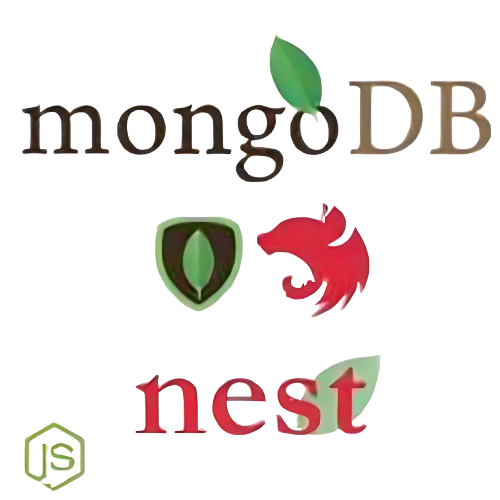Elevate your backend development skills with this all-inclusive Advanced Backend Development Course—perfect for both beginners and experienced developers alike. Whether you're just starting or looking to deepen your expertise, this course will teach you how to build powerful, scalable server-side applications from the ground up. You'll learn cutting-edge technologies such as Node.js, TypeScript, Express.js, NestJS, and MongoDB with Mongoose. Starting with the basics and gradually advancing to complex patterns, architecture, and best practices, you'll gain the skills to create modern APIs and backend systems. By the end of the course, you'll be equipped to design, develop, and deploy sophisticated applications capable of handling high loads and scaling with ease.
Syllabus:
Module 1: Advanced JavaScript and TypeScript
Recap of core JavaScript concepts for backend development
Introduction to TypeScript: Types, Interfaces, and Generics
Setting up TypeScript with Node.js
TypeScript classes, decorators, and modules
Advanced TypeScript features for large-scale applications
Module 2: Node.js in Depth
Advanced Node.js architecture and event-driven programming
Working with child processes, worker threads, and clusters
Memory management and performance optimization in Node.js
Handling file uploads, streaming data, and real-time communication with WebSockets
Error handling and logging strategies
Module 3: Express.js Advanced Patterns
Building large-scale APIs with Express.js
Advanced routing techniques and middleware
Implementing API versioning and validation
Rate limiting and security best practices (CORS, CSRF, etc.)
Building scalable REST APIs with best architecture practices
Module 4: Introduction to NestJS Framework
What is NestJS and why use it?
Setting up a NestJS application with TypeScript
Controllers, Providers, and Modules in NestJS
Dependency Injection (DI) in NestJS
Handling routing, validation, and middleware in NestJS
Module 5: Building Complex APIs with NestJS
Advanced decorators and providers in NestJS
Custom guards, interceptors, and filters for handling requests
Using WebSockets and GraphQL in NestJS
Structuring large-scale, modular NestJS applications
Integrating third-party libraries with NestJS
Module 6: MongoDB and Mongoose Advanced Techniques
Database indexing and performance optimization in MongoDB
Advanced querying, aggregation, and data modeling with Mongoose
Managing relationships between collections (1-to-many, many-to-many)
Implementing MongoDB Transactions for consistent data updates
Best practices for schema design and data validation with Mongoose
Module 7: Authentication and Authorization
Role-based access control (RBAC) in Node.js applications
Using JWT (JSON Web Tokens) and OAuth2 for securing APIs
Multi-factor authentication (MFA) strategies
Session management and secure cookie handling
Integrating Passport.js and implementing social logins
Module 8: Microservices Architecture with Node.js and NestJS
What are microservices? When to use them?
Building and orchestrating microservices in NestJS
Communication between services: Message queues (RabbitMQ, Redis)
Deploying and scaling microservices with Docker and Kubernetes
Monitoring and debugging microservices in production
Module 9: Building, Testing, and Deploying Production-Ready Apps
Setting up CI/CD pipelines for Node.js projects
Unit testing, integration testing, and end-to-end testing (Jest, Supertest)
Using Docker for local development and deployment
Deploying your application to cloud services like AWS, GCP, or Heroku
Best practices for maintaining and scaling production systems
Module 10: Final Project
Design and build a fully-featured backend application using all learned technologies
Implement complex features like authentication, role-based access control, and API integrations
Focus on performance, scalability, and security
Deploy your project to a cloud platform and prepare for high-traffic use cases


